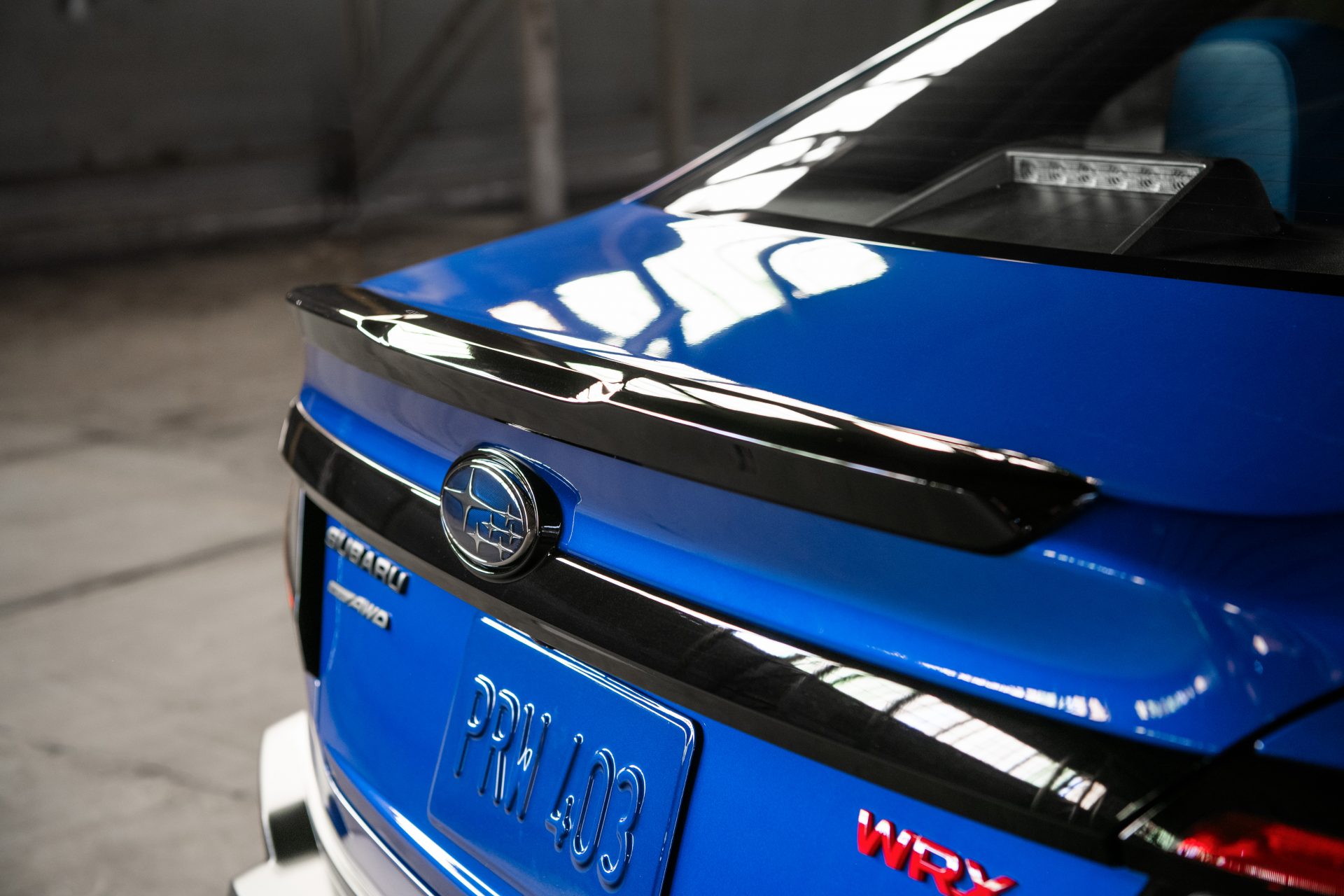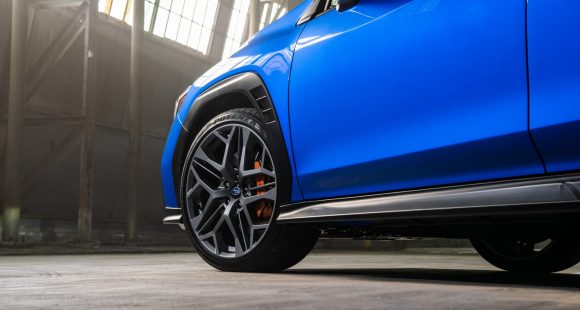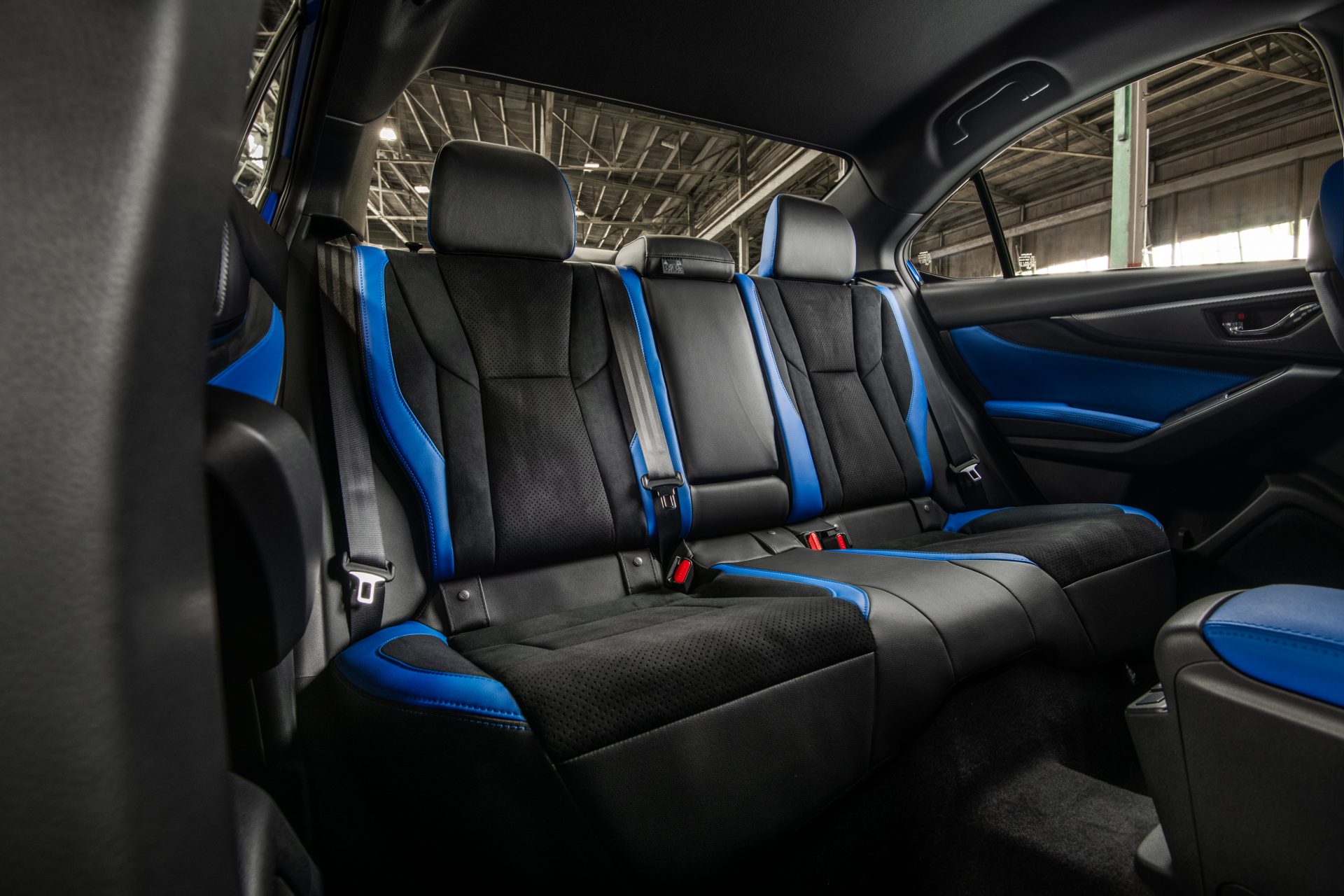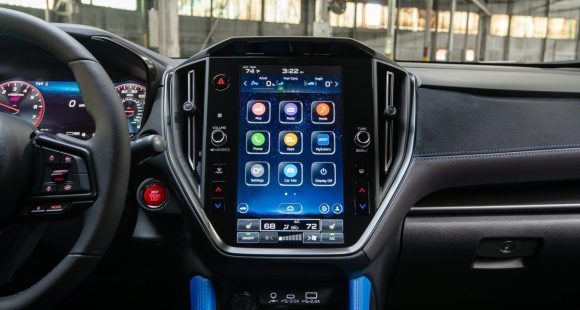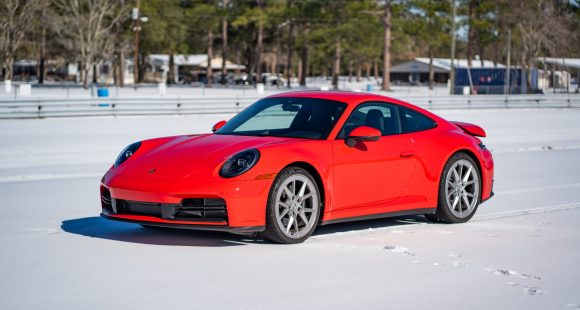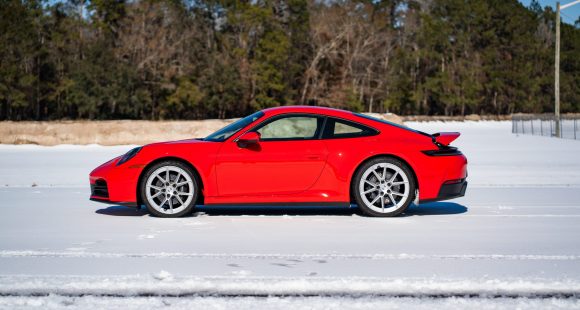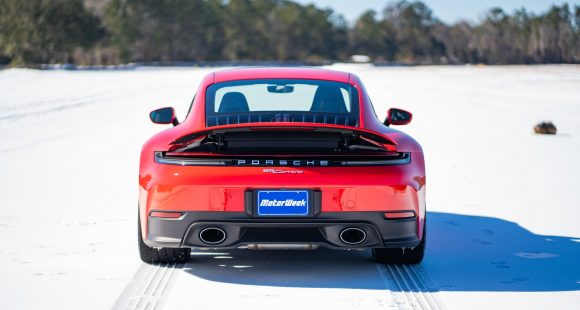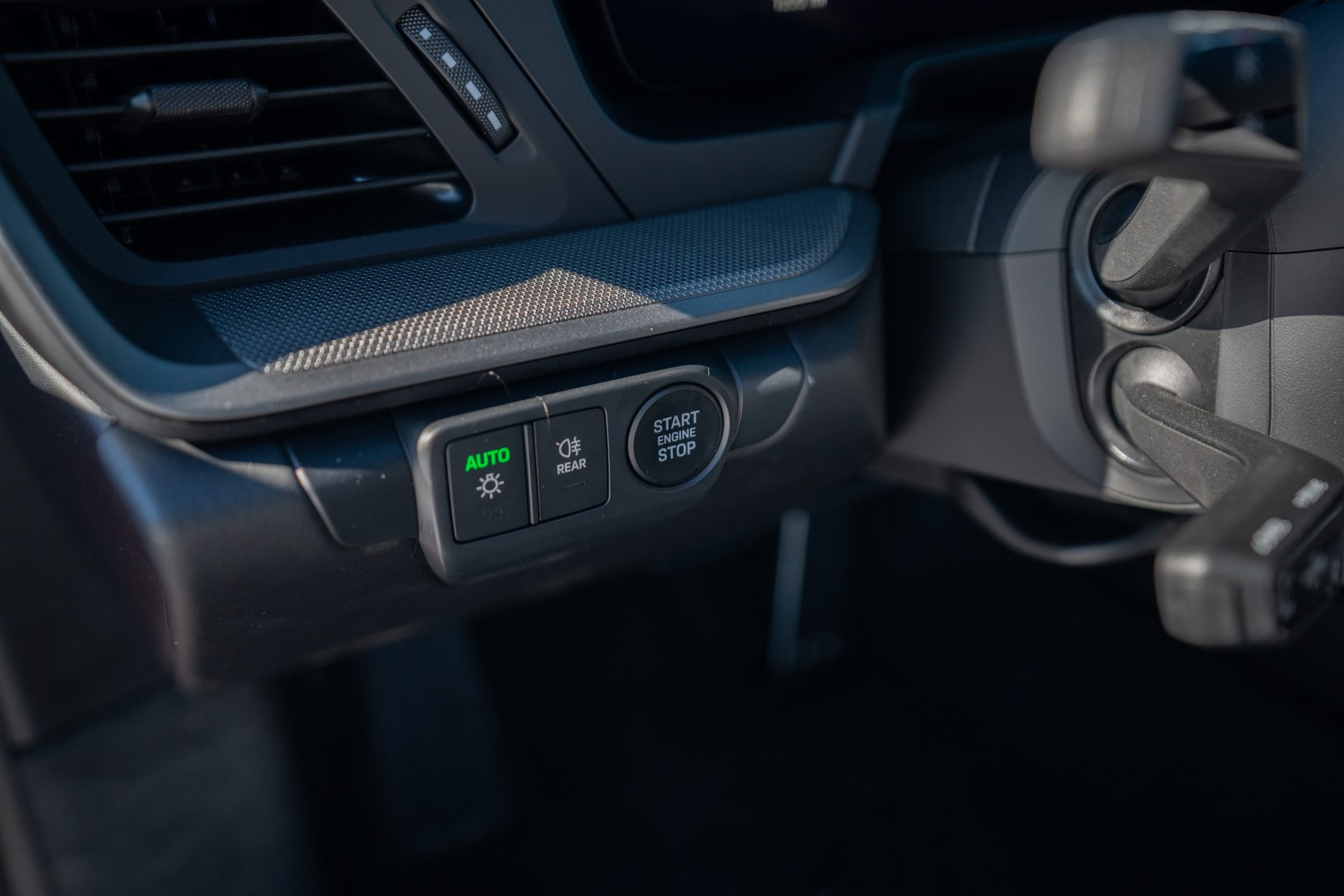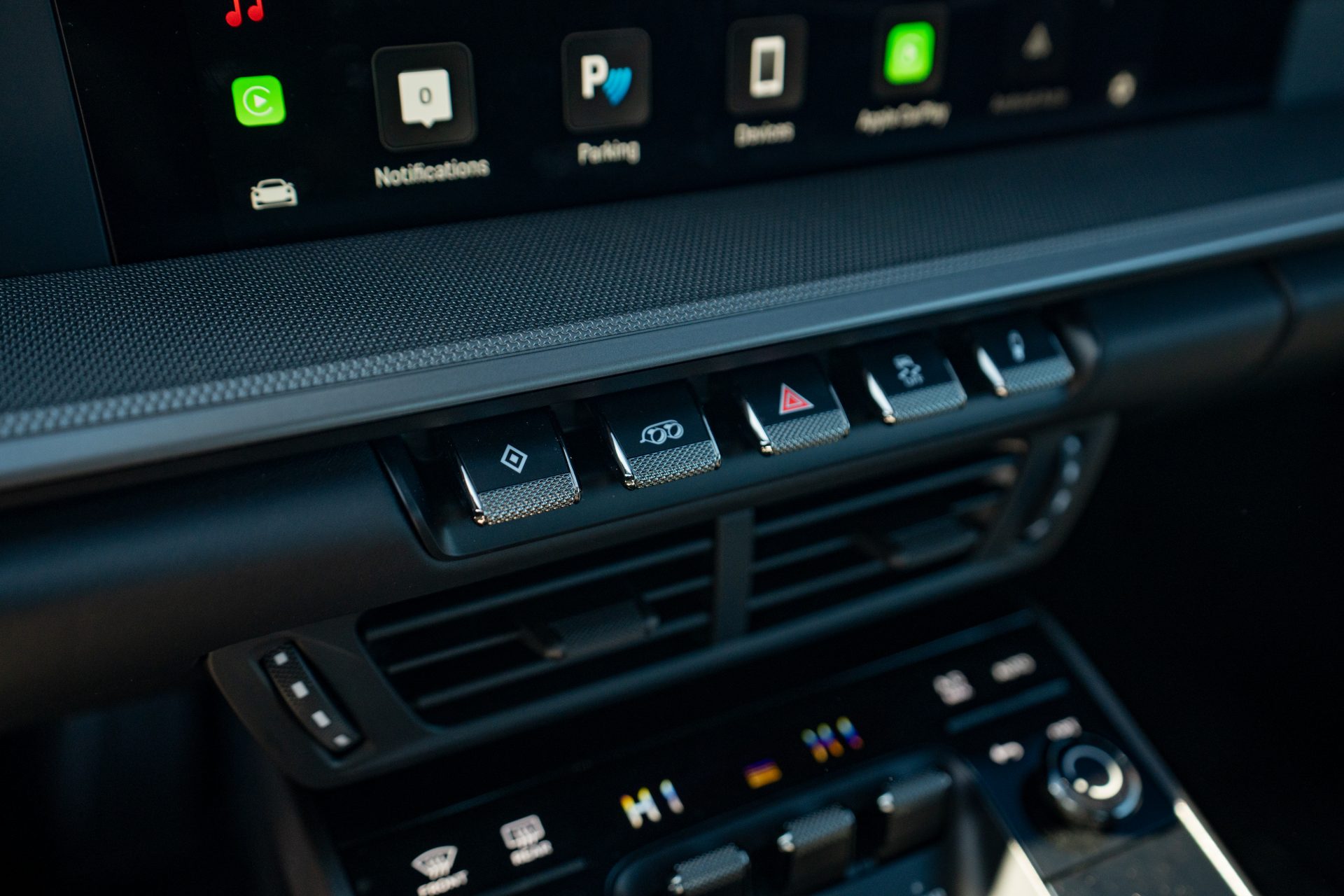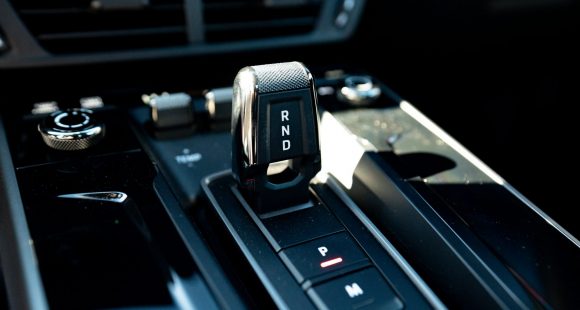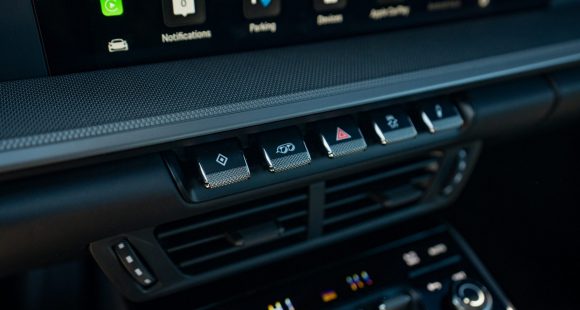2014 Chevrolet SS
It’s been 18 years since Chevrolet has offered a rear-wheel-drive sport sedan in their line-up. But it’s not like GM was out of the game entirely, they just left such drivetrains to Cadillac and Pontiac, not to mention their Australian Holden brand, which is where the 2014 Chevrolet SS comes from. Well after a brief fact finding mission, here’s our scoop on the General’s new “rear” admiral.
Yes, Chevrolet is back in the rear-wheel-drive performance sedan business! And you don’t have to be a fan of NASCAR to be excited about that, as with the 2014 SS the bowtie brand now has a fresh and complete suite of high-pro offerings from the all-new Corvette to the refreshed Camaro, and even the small but potent Sonic RS.
The SS joins the Chrysler RWD duo of Charger and 300, and while that’s a small competitive set, we think GM has their sights on loftier competition like European sport sedans. As like other recent GM cars, the SS spent significant development time on the Nurburgring.
And it didn’t take us long, while driving through the many sweeping corners near Palm Springs, California to find the SS’s near perfect balance very rewarding. It is a big car, yet weighs in at under 4,000-pounds. We found the nose a tad heavy; still it felt precise, like driving a 4-door Camaro with better forward visibility.
 And that makes sense, since both SS and Camaro are based on Holden Commodore architecture from GM Australia; and since an SS was in the works from the beginning, there’s been no Americanization compromise.
And that makes sense, since both SS and Camaro are based on Holden Commodore architecture from GM Australia; and since an SS was in the works from the beginning, there’s been no Americanization compromise.
Much like the Camaro, rear visibility is not so great, with a huge deck lid spoiler in your rear view mirror.
This chassis was also under the short lived Pontiac G8, but has been updated since then; and now has belt-driven variable assist electric power steering. While there’s nothing high tech about that, we found it very dialed in with quick response, though even more feel would be nice.
But, while the SS’s firm suspension is great in the twisties, it gets tiresome on the highway. Better seats would help, as would GM’s Magnetic Ride suspension which is not available. All SS’s wear a limited-slip rear and a 6-speed automatic that we found a little slow on response when left alone, unless in Sport mode. Better to use the standard paddle shifters.
Natch, there’s GM small-block power burbling under the hood. An LS3 6.2-liter V8 with nice level numbers of 415-horsepower and 415 lb-ft. of torque. Exhaust gives a nice bark, but inside it remains quiet, which can be good or bad depending on what’s music to your ear. 0-60 time is right at 5.0 seconds.
 Inside, things are more sport than luxury; with plenty of SS logos, red stitching, and chrome dash trim. Gauges are equally sporty, featuring the familiar GM deeply hooded twin dial setup with color info screen in between; only hoods are round versus the Camaro’s squarish corners. A color Head Up Display is standard.
Inside, things are more sport than luxury; with plenty of SS logos, red stitching, and chrome dash trim. Gauges are equally sporty, featuring the familiar GM deeply hooded twin dial setup with color info screen in between; only hoods are round versus the Camaro’s squarish corners. A color Head Up Display is standard.
Back seat space and comfort are the real strong points here; as seats are large and well padded, offering great comfort for 2 or 3 in a pinch. There’s also good cargo space in the trunk at 16.4 cubic-ft. Chevrolet’s MyLink with 8-inch touch screen display includes standard navigation, and the SS is the first Chevrolet to feature Automatic Parking Assist.
Exterior design is testosterone filled with a muscular nose-down stance, flared out fenders, and staggered 19-inch wheels with 245/40 rubber up front, 275/35 in the rear. Though the friendly new Chevrolet face keeps this Super Sport from being too aggressive. HID headlights and LED running lights are standard.
Fuel Economy is more old school muscle car than modern sport sedan with Government Ratings of 14-City, 21-Highway, and 17-Combined. That means a Gas Guzzler tax and a poor Energy Impact Score of 19.4-barrels of annual oil use and 8.9 tons of CO2 emissions.
The SS is truly an international affair, being built in Australia, developed in Germany, with a big Detroit designed power V8 that’s actually assembled in Mexico.
 Fortunately, pricing is simple as there are very few options and just one model of SS starting at $45,770. That’s very close to an SRT8 Charger sedan.
Fortunately, pricing is simple as there are very few options and just one model of SS starting at $45,770. That’s very close to an SRT8 Charger sedan.
It truly is great to see Chevrolet return to the full-size rear drive sedan ranks. And while the SS is fun that we enjoyed more than we thought we would, it’s not as refined as the Charger, which would probably still be our hot-rod big four-door pick.
Another wrinkle is the unknown future of the SS. GM says it will stop building vehicles in Australia by 2017. Let’s hope the Chevrolet SS finds a new home in our home before then; and perhaps a little more refinement as well, or else it may quickly disappear like the G8. And, that would be a real pity!
Specifications
- Engine: 6.2-liter V8
- Horsepower: 415
- Torque: 415 lb-ft.
- 0-60 mph: 5.0 seconds
- EPA: 14 mpg city/ 21 mpg highway
- Energy Impact: 19.4 barrels of oil/yr
- CO2 Emissions: 8.9 tons/yr
2025 Subaru WRX tS
Subaru’s “World Rally eXperimental” Gets Tecnica-Tuned Tech
Building on its global rally heritage, WRX has been a standalone Subaru nameplate, marketed separately from garden variety Impreza, for two generations now. And while the current WRX still lacks the full STI treatment, this WRX tS serves up some of that high-performance spice we’ve been longing for.
Before we go flat out into our Track Test of this 2025 Subaru WRX tS, lets open the Subaru dictionary so we’re all on the same page. “tS” stands for “tuned by STI;” and “STI” is an acronym for “Subaru Tecnica International,” the brand’s high-performance sub-group best known for upgrading the WRX— oh, that stands for “World Rally eXperimental,” in case you didn’t know.
All that said, STI has been largely dormant for this WRX generation, but this tS sprinkles more of their engineering magic into the mix. No, that doesn’t mean extra power, but does mean significant chassis-related improvements.
First, electronically controlled dampers, adjustable through the 11.6-inch tablet-style infotainment screen. That meant a softer “comfort” mode on the 10+ hour commute to and from Savannah’s Roebling Road Raceway. But once we were there, it was the firmer “Sport+” setting all the way, heightening response from the WRX’s throttle and already quick dual-pinion power steering system. There’s still some body roll for rally-esque weight transfer, but it’s well sorted and provides the “toss-ability” you want in a WRX.
Though if you do autocross your tS, which we implore you to do, you might feel the six-piston front, two-piston rear Brembo brakes first. The bite is strong, giving good rotation in the corners and plenty of “halt” for this 3,400 lb. compact with minimal fade, keeping us on track all week…until some unfortunate winter weather passed overhead. No worries here, as Subaru’s Symmetrical All-Wheel-Drive system got us to the track for some powdered deserts: Frosted donuts served up Michelin style, a set of winter tires different from the grippy Bridgestone Potenza S007 rubber the tS typically rides on. Some prior hot laps of California’s Sonoma Raceway gave credence to those Bridgestones, and showed us what this hot-compact can do in ideal conditions.
It’s well sorted and provides the “toss-ability” you want in a WRX.
Other tS enhancements are cabin-based, namely these beautiful blue Recaros. Most of our staff appreciated their moderately-aggressive bolstering on both street and track. And they’re even heated, too. Another tS-only appointment is this 12.3-inch digital gauge display. It mimics the standard analog gauges with some additional info, but can switch to a navigation mode for more convenient route guidance.
We do wish our tS came in the new Galaxy Purple or the trademark World Rally Blue, but this Crystal White paint wasn’t too shabby, contrasting its Cherry Blossom Red badging and blacked-out lip spoiler. Otherwise, the tS is like any other WRX, down to the hood scoop funneling air to the top-mounted intercooler.
Underneath is the same turbocharged 2.4-liter flat-four in all other trims, boxing at 271 horsepower and 258 lb-ft of torque. The freak winter weather stopped straight-line testing, but a 0-60 time estimate of 5.5 seconds is about as spry as you realistically need, pulling strong through most of the tach; though the 6,000 RPM redline required attentive shifting of the six-speed box, which the tS comes exclusively with. The throws are precise, if a little long, and the clutch is wonderfully weighted.
With discontinuation of the Base trim, pricing for the WRX now starts with Premium at $36,920. The tS is at the top of the lineup with the automatic-only GT, both starting at $46,875. All WRXs continue to be made in Gunma, Japan.
If you’re an enthusiast itching to do the tuning yourself, perhaps the 2025 Subaru WRX tS is not for you. But if you want a plug-and-play experience, this is it. While it won’t exactly bestow the loose-cannon, top-level driving skills exhibited by famous WRC drivers upon you, the tS moves this WRX’s game in a direction we’ve so desperately wanted Subaru to take.
Specifications
As Tested
- Engine: 2.4-liter flat-four
- Tranmission: 6-speed manual
- Horsepower: 271
- Torque: 258 lb-ft
2025 Porsche 911 Carrera
Ever Evolving 911 Reaches New Heights
The Porsche 911 has existed for 60 years now! Amazing! And, you could argue that major changes over all those years have been relatively few, as constant incremental improvement is more the way that Porsche does business. With that in mind, let’s hit the track in the latest 911 and see what constant improvement means for 2025.
We’ve driven so many 911s here at MotorWeek, each seemingly more special than the last, so it’s a bit refreshing to be ripping around Savannah’s Roebling Road Raceway in a 2025 Porsche 911 that’s about as close as you can get to base these days. And the fact that it’s just as fun as all those exclusive pieces says a lot about how far the 911 has come. Perhaps it also speaks to how much a base 911 will set you back today as well; more on that later.
For now, we’re just thinking about the next apex, holding steady throttle as we approach, and getting on it way sooner than you’d expect without upsetting anything, as the 911 rockets off the corner thanks to tremendous grip and a PDK trans that finds the perfect gear before we even gave it a thought. Even with very cold track temps, we never struggled for grip or battled any wheelspin coming off of corners. And trying to land it in that perfect spot in braking zones is easy with strong brake performance that was predictable and consistent lap after lap; no wandering, and great feedback too.
Yes, even the standard 911 is near pure perfection on a racetrack. It gives you all the right feedback, stays incredibly flat through corners, makes you always feel totally in control, and again is just plain fun. Unless you’re chasing lap times, there’s really no need to head further up the 911 tree. Though it is worth noting the few upgrades that were on our Carrera did help the situation a little. The 20- and 21-inch Carrera S wheels enabled plenty of grip from the 305 Pirelli P Zero tires, the Sport Chrono Package allows 0-60 sprints of 3.7 seconds, an extended range fuel tank meant we could lap all day without having to fill up, and the fantastic Sport Seats provided great support and better comfort than we remember experiencing in a 911. The Sport Exhaust system didn’t add anything to performance, but made things sound a whole lot better, and the oval silver tips look great too.
We never struggled for grip or battled any wheel spin coming off of corners.
Our track time got cut short thanks to a rare snowstorm in Coastal Georgia, but the white stuff and blue sky made the perfect backdrop for our Guards Red Carrera. Exterior tweaks for what is officially the 992.2 include a reshaped front fascia with improved aerodynamics. All front lighting is now contained within the Matrix Design LED headlight housing. The rear fascia has also been smoothed out, the license plate moved higher, and Porsche 3D block lettering spelled out across the back beneath the active rear spoiler and new decklid grille.
Even without Turbo in the name, the standard 911 engine is indeed a turbo these days, a 3.0-liter flat-six twin-turbo delivering 388 horsepower and 331 lb-ft strictly to the rear wheels in the Carrera Coupe.
Inside the cabin, the 911 continues its slow crawl towards the modern, now including a 12.6-inch fully digital gauge display and a start button located on the left side of the steering wheel, with drive modes easily accessible on the wheel itself. In another no brainer move, Porsche now makes the rear seat a no cost option, so you can choose if you want it or not.
Government Fuel Economy Ratings are 18 City, 25 Highway, and 21 Combined. That’s only slightly worse than average for the Energy Impact Score; 14.2 barrels of annual oil consumption with 7.0 tons of CO2 emissions.
The good news is this 911 had the fewest number of options of any Porsche that we’ve tested in some time, and it was still plenty awesome; the bad news is, a base Porsche 911 Carrera Coupe now starts at $122,095.
But can you really put value on “the force,” this mythical power that Porsche seems to have, that somehow turns average drivers into great ones? It’s useless to resist as far as we’re concerned, as it only gets better with the 2025 Porsche 911 Carrera.
Specifications
As Tested
- Engine: 3.0-liter twin-turbo flat-6
- Transmission: 8-speed PDK
- Horsepower: 388
- Torque: 331 lb-ft















